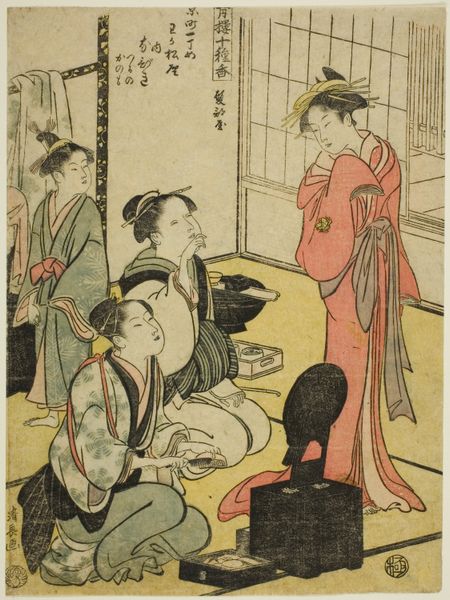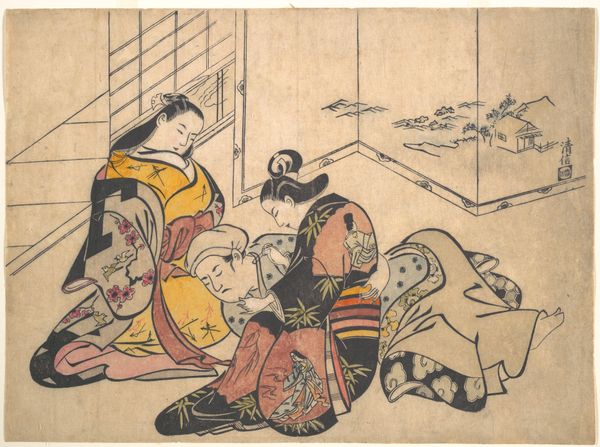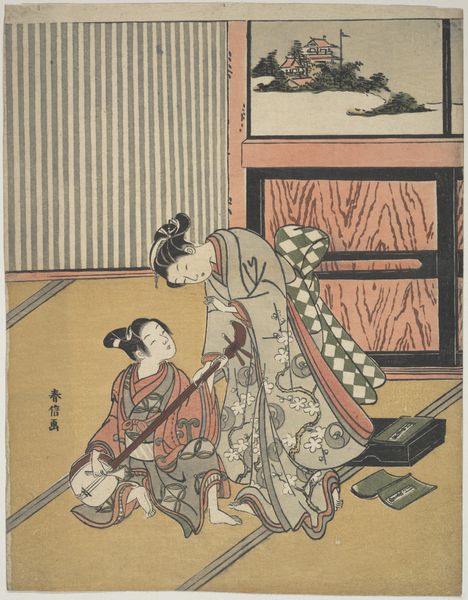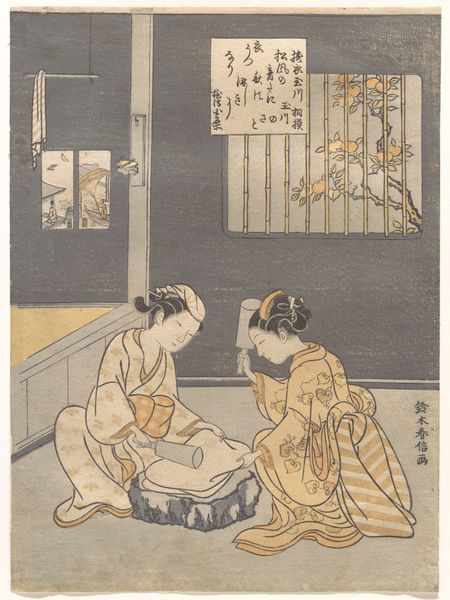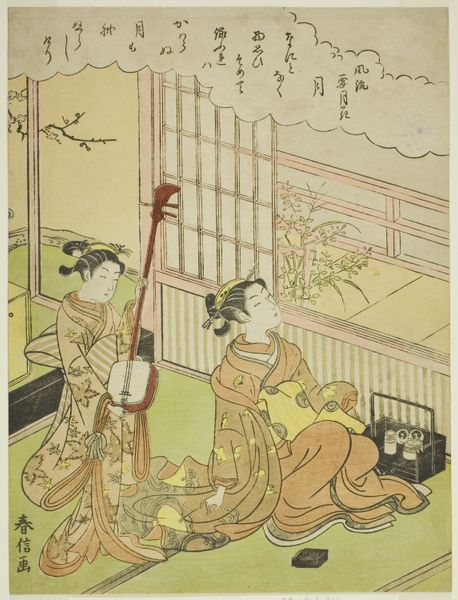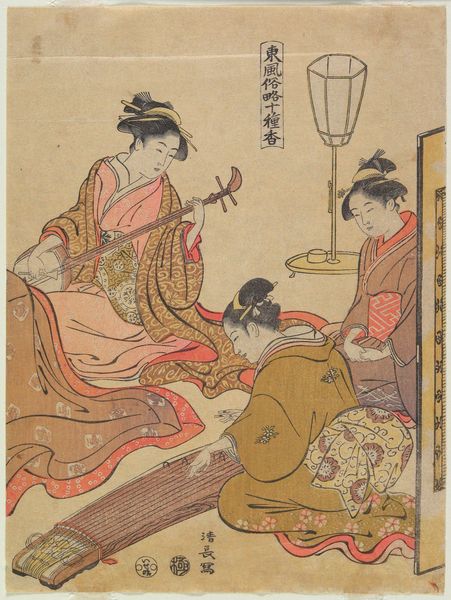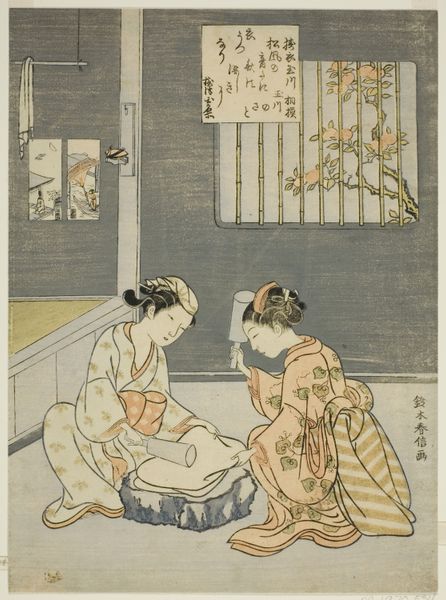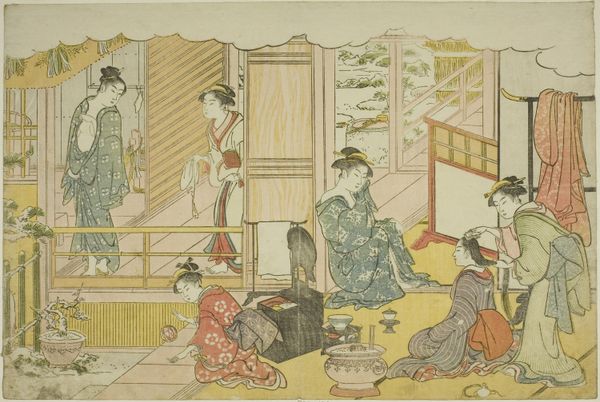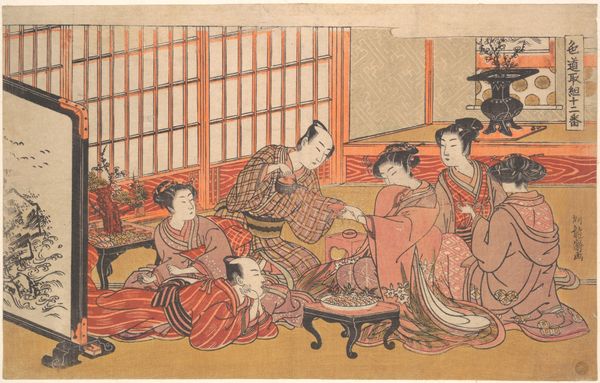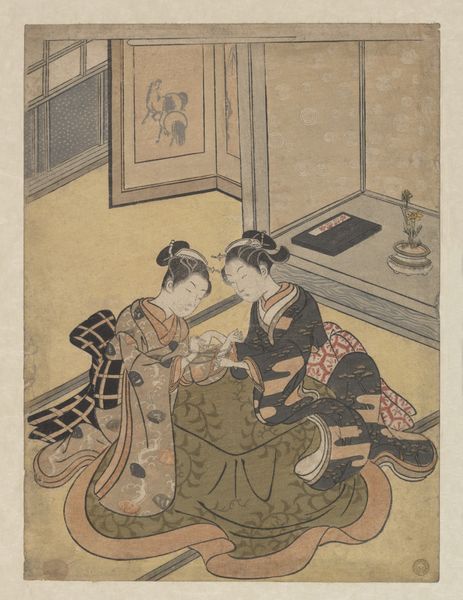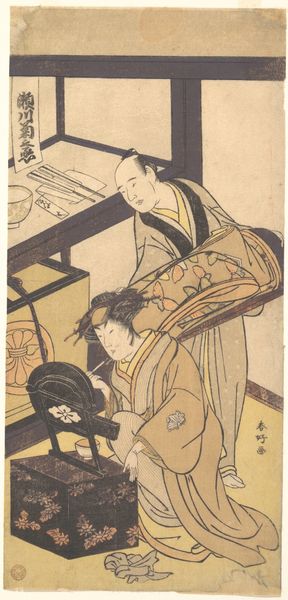
Young Women Playing Poem Cards c. 1766 - 1767
0:00
0:00
print, woodblock-print
# print
#
asian-art
#
ukiyo-e
#
figuration
#
woodblock-print
#
genre-painting
Dimensions: 8 3/8 × 10 5/8 in.
Copyright: Public Domain
Curator: Looking at "Young Women Playing Poem Cards" by Suzuki Harunobu, created around 1766-1767, I’m struck by its quiet intimacy. Editor: Immediately, what gets me is the print's texture. The evenness of the colored planes hints at the extensive labor required to make such a seemingly simple artwork. Curator: Indeed. It's part of the Ukiyo-e tradition, reflecting everyday life. These young women, likely from privileged backgrounds, are engaged in a refined pastime, playing poem cards, known as "uta-garuta". There's a gentle feminization of intellectualism here. Their elegance is coded not just in their clothing but in their engagement in arts and literature, historically gatekept domains. Editor: Right, the poem cards themselves act almost like components in a highly skilled artisanal assembly line. There were carvers, printers, and the publishers who all participated in material production and cultural exchange in a commodified way. Even the way the print utilizes perspective—flattened and stylized—shows a self-conscious construction. Curator: Absolutely. And the print captures not only the game itself but the setting—a tatami-matted room, sliding doors… a glimpse into their domestic sphere. It hints at women’s networks and their cultural output within confined social parameters. We see women supporting women. Editor: Exactly! Let’s not romanticize too much; it’s also a constructed performance of femininity, of course. The beauty lies, I think, in understanding its materiality and where those beautiful kimonos were produced and from what labor, connecting these upper-class subjects to the material reality that underpinned them. Curator: It prompts us to look at women not as monolithic but in their complex relation to objects, rituals, and power structures of their era, something that resonates even today. It is through these intersectional perspectives that our comprehension deepens, enriching our insights to challenge conventions in contemporary gendered norms. Editor: Definitely. It highlights for me the tension between handcrafted beauty and the socio-economic machinery that birthed this artwork in the first place, prompting critical reflections about labor.
Comments
No comments
Be the first to comment and join the conversation on the ultimate creative platform.
